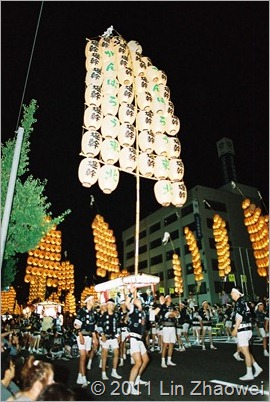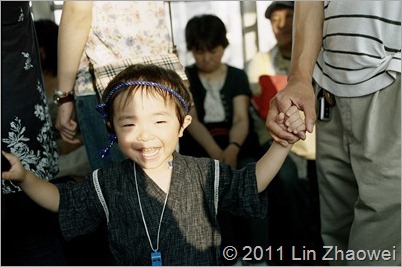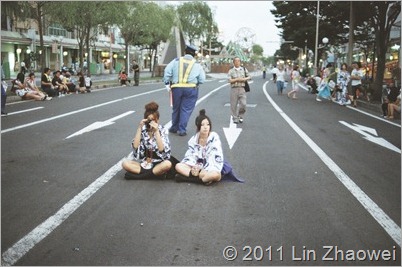The second stop of my summer matsuri vacation was the city of Akita, known for its delicious rice, beautiful women, and the Akita Inu dog breed. (Hachiko, the legendary canine who waited for its dead master at Shibuya train station for a decade, was an Akita Inu.)
Akita’s Kanto Matsuri (竿灯まつり), which draws 1.3 million visitors annually, involves adult men balancing huge bamboo frames – called kanto – through various means during an evening parade. The most basic move is balancing the pole on the palm, but the more skillful performers would try doing so on their shoulders, their heads, or even their hips.
Historical records show that the Kanto festival started at least 250 years ago, its main purpose to pray for a good rice harvest. The practice of balancing the kanto was said to have started as a means to stave off the lethargy caused by the summer heat.
 |
| One of the many groups at the Kanto festival. The biggest kanto are 12m high and weigh 50kg, with about 46 paper lanterns attached. |
Shooting this festival was a major challenge for me. Firstly, framing was difficult because the performers are constantly on the move. Secondly, it’s difficult to capture the right background because everyone else is also moving. Thirdly, as the people with the kanto do their balancing act, their team members move around them, often preventing me from getting a clear shot. Lastly, there generally isn’t much variation – the moves don’t differ that much after a while…


